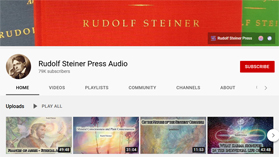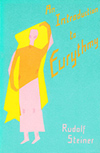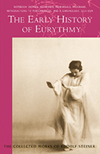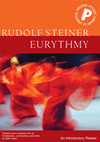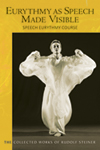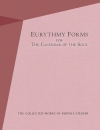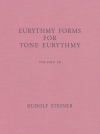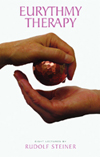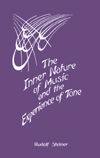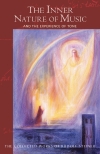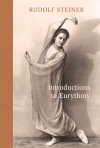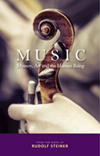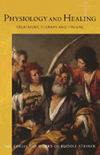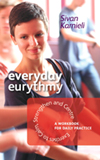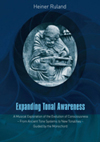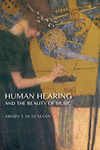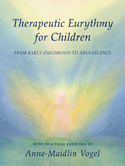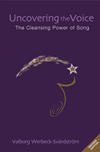
- RUDOLF STEINER
- OTHER AUTHORS
-
MUSIC AND EURYTHMYRUDOLF STEINER
The art of eurythmy strives to make the invisible visible in a harmonious and disciplined play of color, form, sound, and motion. During the early years of the twentieth century when eurythmy was young and little known, Rudolf Steiner's introductory talks prepared nearly 300 audiences for their encounters with this wholly new way of presenting drama, poetry, and music through human movement. Full of life and creativity, these talks illuminate the richness underlying the spiritual laws of this new art form.
Notebook entries, addresses, rehearsals, programs, introductions to performances, and a chronology, 1913–1924; Talks given before 16 eurythmy performances in Bottmingen, Dusseldorf, Munich, Berlin, Dornach, Stuttgart, Ilkley, and Penmaenmawr
An Introductory Reader
Rudolf Steiner's original contribution to human knowledge was based on his ability to conduct 'spiritual research', the investigation of metaphysical dimensions of existence. Samples of his work are to be found in this introductory reader in which Beth Usher brings together excerpts from Steiner's many talks and writings on Eurythmy. The volume also features an editorial introduction, commentary and notes.
EURYTHMY AS SPEECH MADE VISIBLE
Speech Eurythmy Course
With these fundamental lectures on speech eurythmy – given just months after his course entitled ‘Eurythmy as Visible Singing’ – Rudolf Steiner completed the foundations of the new art of movement. In connecting to the centuries-old esoteric and exoteric Western traditions of ‘the Word’ – the creative power in the sounds of the divine-human alphabet – he gave it concrete form and expression in the performing arts, education and therapy. Although aimed primarily at the professional concerns of eurythmists who perform, teach or work as therapists, the lectures offer a wealth of suggestions and insights to anyone interested in the arts.
‘The study of music is the study of the human being. The two are inseparable, and eurythmy is the art which brings this most clearly to expression. In these lectures, Rudolf Steiner guides us along a path toward an understanding of the human form as music comes to rest – the movements of eurythmy bringing this music back to life.’ – Dorothea Mier
EURYTHMY FORMS FOR THE CALENDAR OF THE SOUL
These eurythmy forms and indications (CW A 23/2), published here for the first time in English, were given by Rudolf Steiner for the weekly verses of The Calendar of the Soul. The wealth of forms and metamorphoses in the cycle of the year is study material for all students of eurythmy. The forms can also be stimulating for those who are not practicing eurythmists but are interested in deepening their relationship with the calendar’s verses and the cycle of the year.
EURYTHMY FORMS FOR TONE EURYTHMY
Volume IX
The art of movement called eurythmy began about eighty years ago, based on Rudolf Steiner’s knowledge of spiritual beings and meanings behind various human movements, as well as knowledge of the inner spiritual qualities of human beings when we move.
Created in 1911, eurythmy was developed for years as an artistic and educational discipline. Although Rudolf Steiner pointed out its healing aspects from the very beginning, it was only in 1921 that he gave a course of lectures that gave the art of eurythmy a vital new application. To the assembled eurythmists and doctors, he presented what one participant described as '...a complete and detailed method of eurythmy therapy, in which we could directly experience that even today the creative and therapeutic power of the word ... is still at work'.
EURYTHMY, ITS BIRTH AND DEVELOPMENT
‘This gave my mother the opportunity of mentioning to Dr Steiner an idea… Could one affect the physical body in a healing, strengthening and regulating way through certain rhythmical movements of the etheric body – which after all was the centre of all that was rhythmical – as well as of health and illness? Dr Steiner not only enthusiastically affirmed this possibility, but spontaneously declared himself ready to give the necessary directions which I could then work out with my mother’s help.’ – Lory Maier-Smits
THE INNER NATURE OF MUSIC AND THE EXPERIENCE OF TONE
"A tone is at the foundation of everything in the physical world." This is one of many astonishing statements made by Rudolf Steiner in this collection of seven lectures on the inner realities of music. These lectures are an unusual treasure as they are the only two groups of lectures that Steiner gave primarily on music, other than the lecture cycle for the tone eurythmy course, Eurythmy as Visible Music.
and the Experience of Tone
Introduction by Dorothea Mier
“A tone is at the foundation of everything in the physical world.”
An Extension of Goethe’s Morphological Thinking within the Realm of Human Movement
Introductions to eurythmy performances, 1913–1924 . This volume features introductory addresses given by Rudolf Steiner to the first audiences of the newly minted art of eurythmy. Before each eurythmy performance at which he was present, Steiner gave such an introduction. His intention, as he remarked on several occasions, was not to elucidate the meaning of eurythmy intellectually—a vain and inartistic endeavor—but rather to orient the audience to this new undertaking in the realm of art. Steiner took many approaches to this end, describing in his introductions a range of themes, from the origins of eurythmy as a Goethean art form to its role in pedagogy and therapy. As this volume gathers a large collection of these introductions, repetition is inevitable but not without value. A slight nuance of expression can awaken new insight.
Mystery, Art and the Human Being
‘Our neurosensory system is inwardly configured music, and we experience music as an artistic quality to the degree that a piece of music is in tune with the mystery of our own musical structure.’ – Rudolf Steiner
Treatment, Therapy and Hygiene – Spiritual Science and Medicine
‘The intention is to take a practical subject and show how our spiritual science with anthroposophical orientation truly can play an effective role in everyday life.’ – Rudolf Steiner
-
MUSIC AND EURYTHMYOTHER AUTHORS
EURYTHMY AND THE IMPULSE OF DANCE
Marjorie Raffe
Cecil Harwood, Marguerite Lundgren
‘Eurythmy is that very thing which dancers with a true idealism have been unconsciously seeking – that inner harmony and balance that was a natural condition of the Greeks, visible in their statues and carved figures, so that, even in a standing pose, movement seems to flow through them.’
Exercises to Calm, Strengthen and Centre
A Workbook for Daily Practice
Sivan Karnieli
With drawings by Nina-Sophie Jutard-Graewe
‘Eurythmy, if you have heard of it at all, is more than you realize. It is certainly different from how it usually appears...’
A Musical Exploration of the Evolution of Consciousness – from Ancient Tone Systems to New Tonalities – Guided by the Monochord
Heiner Ruland
Heiner Ruland charts a practical path towards a deepened musical understanding, illuminating the panorama of humanity’s musical past. Indicating what may happen – and needs to happen – to music in the immediate and more distant future, the implications of this book for composition, musical education and therapy are immense.
HUMAN HEARING AND THE REALITY OF MUSIC
Armin J. Husemann
Music is not simply something we hear. We experience it and love it; it is a primal human need. If, as the pianist Alfred Brendel put it, that we are able to "take music at its word," we confront questions that also moved the author since his adolescent years: What takes hold of me when I experience music? What reality touches me when music is playing? What happens physiologically in the human body when we experience and make music? The author approaches these questions from three perspectives: first, from his personal experience and active love of music; second, from the physiological perspective; and third, from Rudolf Steiner's spiritual science.
Gracia Ricardo's Approach to Singing, Based on Her Work with Rudolf Steiner
Hilda Deighton
Gina Palermo
Dina Soresi WinterA practical, joyful approach to singing that draws its strength and inspiration from Gracia Ricardo's work with Rudolf Steiner. This is an invaluable book for any singer, professional or not, who wants to improve singing abilities based on working with the whole body - the spirit, the soul, and the physical organism.
THERAPEUTIC EURYTHMY FOR CHILDREN
From Early Childhood to Adolescence With Practical Exercises
Anne-Maidlin Vogel
Preface M. Glocker, Edited N.F. Vogel
As a form of movement therapy, eurythmy has been very effective in treating physical and mental developmental disorders. This book is a rich source of information for professional eurythmy therapists, physicians and teachers of children up to 15 years of age. Therapeutic Eurythmy for Children provides not only examples for exercises, but also offers useful references for personal development and additional training for therapists.
The Cleansing Power of Song
Valborg Werbeck-Svärdström
"This book is pure gold for the singer and singing therapist of today" - Mary Thienes Schunemann, founder, naturally you can sing! productions.

